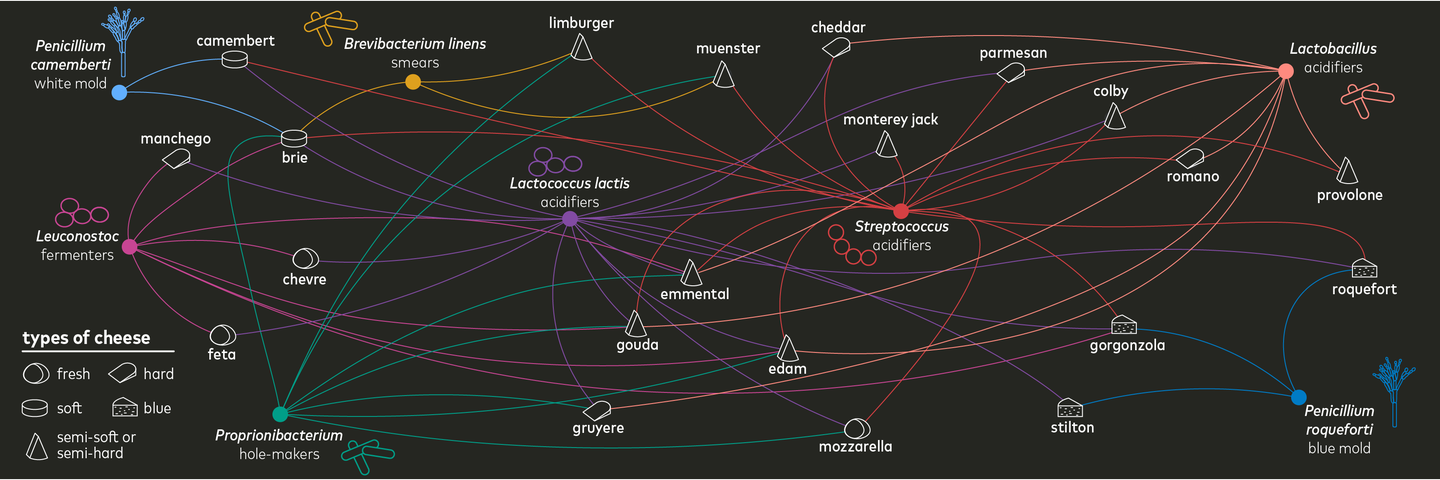Meet the hard-working microbes that make your favorite cheeses
We have tiny living things to thank for all that flavor.

Every bite of cheese you’ve ever taken owes its funk and flavor to the community of microbes living inside it. The original cheese just had whatever microbes happened to be living on the farm, but today cheesemakers deliberately inoculate their dairy with specific types of bacteria and mold. Some organisms are common to lots of cheese types, like the acidifying strains Lactococcus lactis and Lactobacillus. Others produce more specific flavor profiles, like the stinky Brevibacterium linens, which create both the smelly reddish-orange rind on cheeses like muenster and limburger, and the old-sock odor we associate with human body odor (yes, they also grow in your armpits). Two varieties of Penicillium create the blue and white molds we associate with blue cheeses and the rinds of brie. Propionibacteria will make holes like in classic Swiss cheeses.
All of these microorganisms work their magic by breaking down milk proteins into smaller amino acids, sugars, and fatty acids—it’s these molecules that we taste and smell in the final cheese product. There’s a lot more to cheese-making than just these microbes, of course. Each variety requires a specific humidity, temperature, and salinity, all of which control the extent of bacteria growth and the texture of the resulting wheel. But none of it is possible without the living things inside.